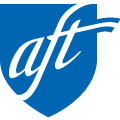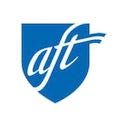Even before COVID-19, our school district was in chaos — so we got creative.
By Angie Rivera
When the pandemic shut down our schools in Rochester, N.Y., my school district didn’t give educators much of a plan to work from. Our district is deep into a financial crisis, short $86 million in Foundation Aid from the state and with nearly 100 midyear layoffs already traumatizing our students. Amid this crisis, the new superintendent resigned. Rochester educators and students were definitely feeling the chaos.
Still, it seemed like our administrators, teachers and food service workers knew how they could keep working — by providing grab-and-go meals, distance instruction and more. But the path forward was less clear for teaching assistants and paraprofessionals. We wondered how best to help our students while school buildings were closed, and we worried whether our own jobs were even safe. I phoned administration, but it took them two weeks to call back.
As teaching assistants and paraprofessionals, our role supporting students in the classroom — in particular, for children in special ed classes — is a huge and important part of what we do. But how could we adapt to distance learning? We decided to be creative; our first priority was to make sure our students knew we were there for them.
The average salary for a paraprofessional in Rochester is just $20,340, so many of us don’t have computers, or internet access and Wi-Fi, at home. But we all have phones.
We began by making phone calls to collect data. We asked our students: Do you have a computer? Do you need a Chromebook? Do you have issues with technology? This was important data to pass along to administrators.
Just as important, we asked our students: Do you know where to go for meals? Do you need help with homework? And, honestly, how are you feeling? Now we are calling our students every week, or even every few days, just to say, “Hey, we are here. We care. How can I help you?”
Many of us are on great teams at our schools; the assistants and paras are in touch with the teachers on our teams, and if we don’t have internet access at home, we drive to a hot spot near the school to join the Zoom meetings. Some paras are making gift bags for their pre-K students — with crayons, scissors, glue, play dough, books, games and, of course, face masks.
At the same time, our school system is chaotic. Our chief financial officer, just five months into the job, resigned last week. He leaves behind a district budget that is staggering under actual and proposed cuts of $152 million. Programs are being cut too, including our Bilingual Language and Literacy Academy, which our district created to serve all the students who arrived here after Hurricane Maria. Because I had come to the United States from Puerto Rico, I understand what a challenge that is. We also have a unique Rochester International Academy for students who arrive in Rochester as refugees. Both programs are now up for cuts, along with our program for students who are new mothers.
Where will these kids find support? I am afraid they will be lost. What is the plan? That seems to be the question we keep asking — about almost everything in the district. And I know my colleagues around the country are asking it too; state budgets have been hit hard by this crisis, and in struggling communities like ours, we’re already seeing cuts to essential services — schools, emergency response, hospitals — the very things that are getting us through this public health emergency.
This pandemic has been very hard on my members, who want to do something but may have limited access or resources. If we had laptops, we could provide more instructional assistance along with the teachers and help keep students engaged during this difficult time.
Our union, the Rochester Association of Paraprofessionals, has also really stepped up. We have four officers, and we’ve divided our membership of 746 teaching assistants and paraprofessionals into four groups; everyone gets a phone call from an officer. We remind them about the AFT’s trauma therapy app and the district’s Employee Assistance Program. Their lives go on — they may be moving and need certification of employment, or they may just need a printer but don’t have one at home — and we can help. This community is our responsibility, and we want to be sure people are getting what they need so they can come out whole on the other side.
Many of our members live in the community here in Rochester; many are single moms, have two or three jobs, have been on Medicaid and SNAP. They understand the dire situations of their very needy students. They can ease their students’ fears. And they can connect to parents in a way that’s very different from the teacher relationship.
When the team is all together — teacher, and teaching assistant, and paraprofessional — we are resilient and strong. That’s when we can feel it: We are really making a difference. Meanwhile, the Rochester school board is now proposing to close five schools and cut more positions: 29 paraprofessional positions and nearly 200 teachers in the coming school year.
It’s really important to remember how traumatic this school year has been for Rochester’s students, and how its educators have always stepped up to help get them through. This isn’t the time to balance budgets on the backs of our kids and our public schools. This is the time to be creative, as educators have been, and find the resources our students really need.

Angie Rivera is president of the Rochester (N.Y.) Association of Paraprofessionals

